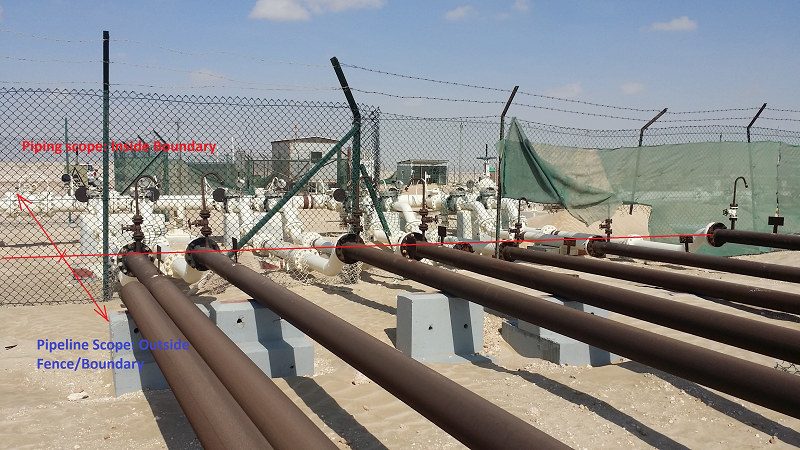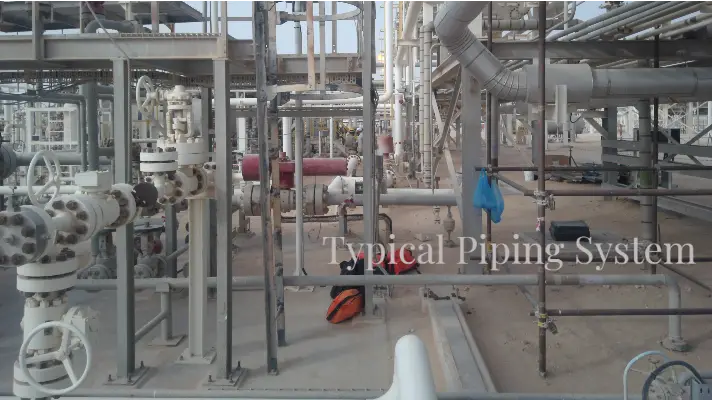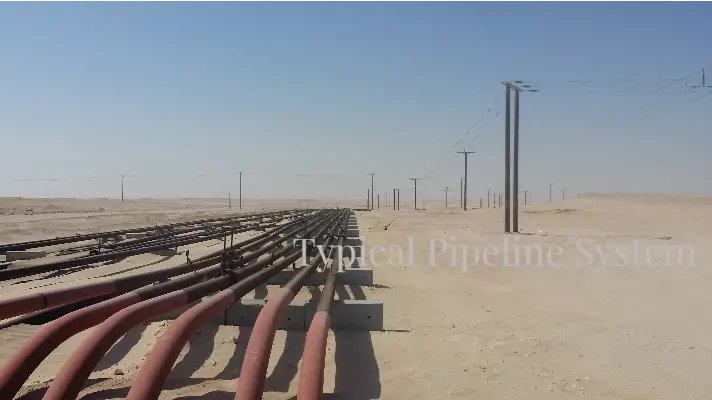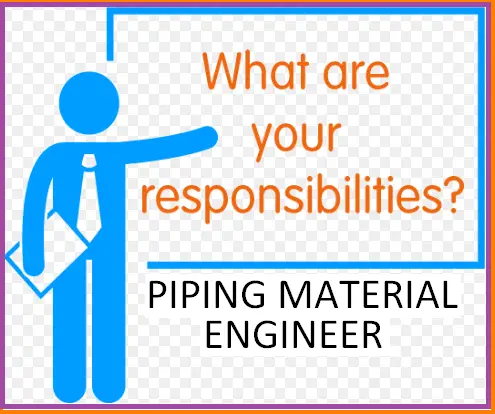Both Piping and Pipeline originated from Mechanical Engineering and many a time, share common activities. For example, both have piping materials, piping expansion, stress, and support problems. So, both piping and pipelines need Stress and Material engineers. Both piping and pipelines are used to transport fluids. On a broad scale, ASME B31.3/ASME B31.1 deals with piping engineering, and ASME B31.4/ ASME B31.8 deals with pipeline engineering. Refer to Figure 1, which shows the piping and pipeline demarcation for a typical plant. Through this article we will try to find out a few other differences that piping and pipeline systems have in a general sense:
Geographical Differences
Piping and Pipelines are normally demarcated by a boundary or fence. Outside the fence comes under the pipeline scope and the inside boundary falls under the piping scope. Generally, a pipeline travels a long distance (across villages or countries) whereas the length of single piping is short (equipment to equipment or pipeline to equipment).
Physical Personality or Action Performed
Piping is normally connected with various equipment and carries fluids inside a complex network that will be processed in that equipment. Whereas Pipelines supply the feed for further processing or deliver the processed fluid or end product and they normally run straight. The number of equipment connections in the pipeline is very less as compared to piping.
Construction
Pipelines travel aboveground, underground, or sub-sea with the maximum part being buried. Whereas, piping systems are mostly aboveground.

Pipe Diameter and Fitting Types
In piping systems, pipe size is normally less (the majority of lines in the Process or the power piping systems are less than 36 inches) but the number of pipe fittings used is very high. On the contrary, pipeline diameters are large and the number of fittings is comparatively much less.
Type of Pipe and valves:
In most cases Line Pipes i.e, API 5L code is used for pipeline material and API 6D is used for pipeline valves whereas piping material uses ASTM, BS, API 5L, or various other codes and standards and piping valves are from BS or API standard.
Design temperature
In most of cases, fluid design temperature for pipelines is normally less than 230 deg C, whereas piping systems carry fluids with different design temperatures.
Hydrotesting Pressure
For the piping system, the hydro test pressure is calculated by multiplying design pressure by 1.5 and a temperature factor whereas pipeline design pressure is 1.25 times the design pressure for liquid pipelines and (1.25 to 1.5) times the design pressure for gas pipelines. Also, pressure holding time for pipelines is normally 24 hours whereas for piping the same is generally, 2 to 6 hrs.

Pipe Routing
While routing pipelines large-diameter elbows (Normally, Hot bends up to 6D and Cold Bend up to 60D) are used whereas piping systems, in general, do not find such large diameter bends.
Construction Drawing
The construction drawings in the case of pipeline systems are termed as alignment sheets, but the same for piping systems are termed as piping isometric drawings.
Surveys
Various technical surveys like Topographical surveys, Soil-resistivity surveys, Cadastral surveys, Hydrological surveys, Geo-technical investigations, etc are performed to collect various data during pipeline design. On the contrary, Only wind and seismic profile studies are performed for piping systems.
Pigging
Long pipelines are cleaned or inspected by used pigs whereas piping systems are cleaned with steam or nitrogen.

Miscellaneous
- Pipelines are normally preserved using inert gas or corrosion-inhibited water.
- Cathodic protection systems are involved with pipelines.
- Corrosion protection coating is normally applied for pipelines whereas piping systems are painted.
- The pipeline runs across rivers, below railroads, highways, etc. Hence, special design and constructional considerations are required.
Few more Resources for you..
Piping Design and Layout
Pipeline articles
Piping Materials
Piping Stress Analysis Basics
Piping Stress Analysis









Excellent job
I am Mechanical Engineer
I have Total 13yrs of Experience of site construction project in Piping fabrication, Erection, Hydrotest and Box-up activities of Erected Pipe lines and in Running Plant involved in Piping Erection, Mechanical clearance, Hydrotest and Commissioning of Equipments and Piping System.
Involved in plant Shutdown Job.
Project Handle :-
1) DTA Coker Revamp Project
2) CDRP [Coke Drum Replacement Project]
Hi, Can someone post a small tutorial how to do pipeline stress analysis step by step using alignment sheet
Great summary.
Very nice article.. i found it very useful
I am a mechanical engineer and now adays I am working as a project manager of pipeline to transmate crude oil for 53 kilo meters using 42 inch pipe thikness 14.3 mm so I want to join you.
PIPELINE OR PIPING SYSTEM AS A PAINTING SUPERVISOR IN OIL AND GAS INSUSTRY WHICH IS BEST FOR FUTURE GROWTH.